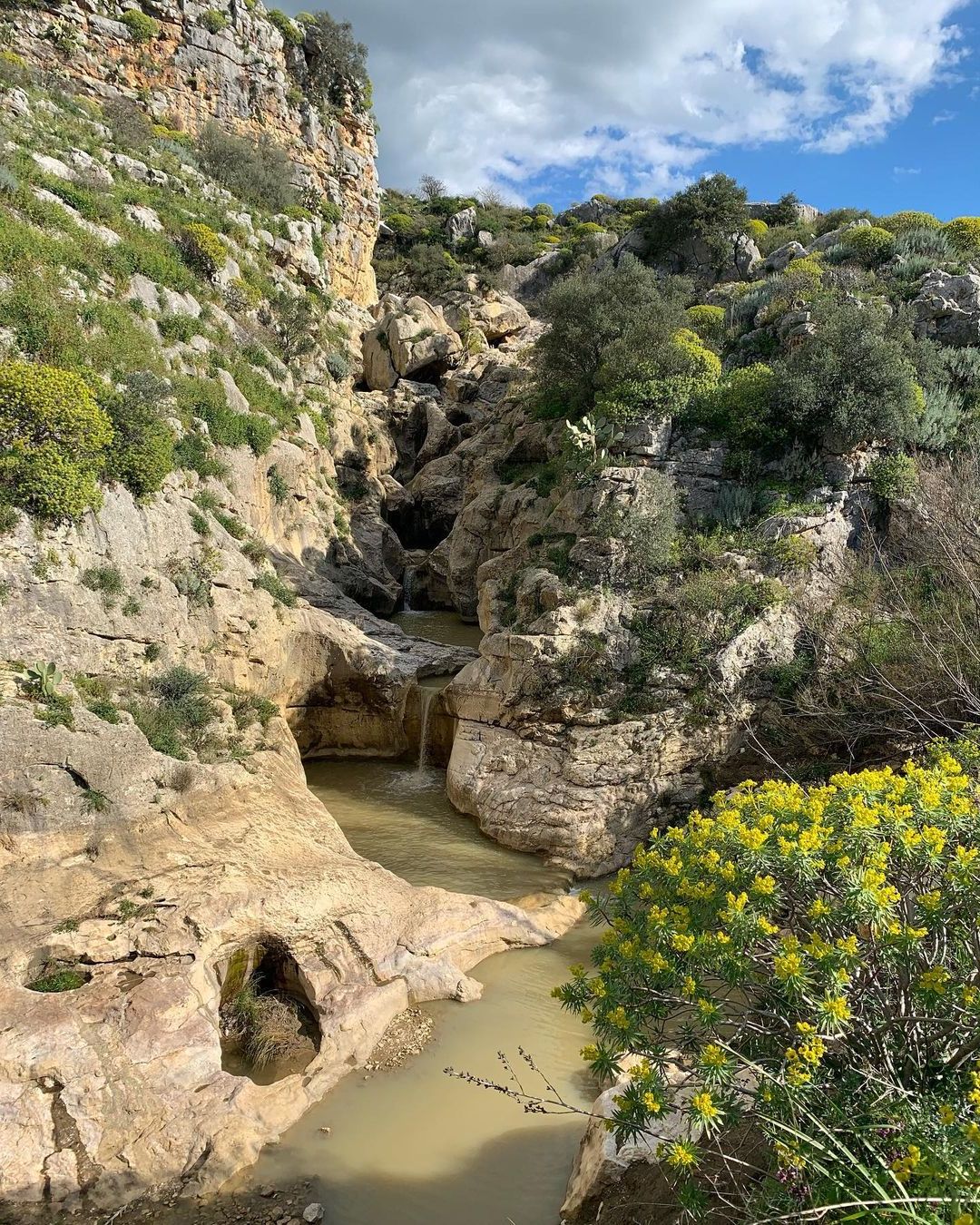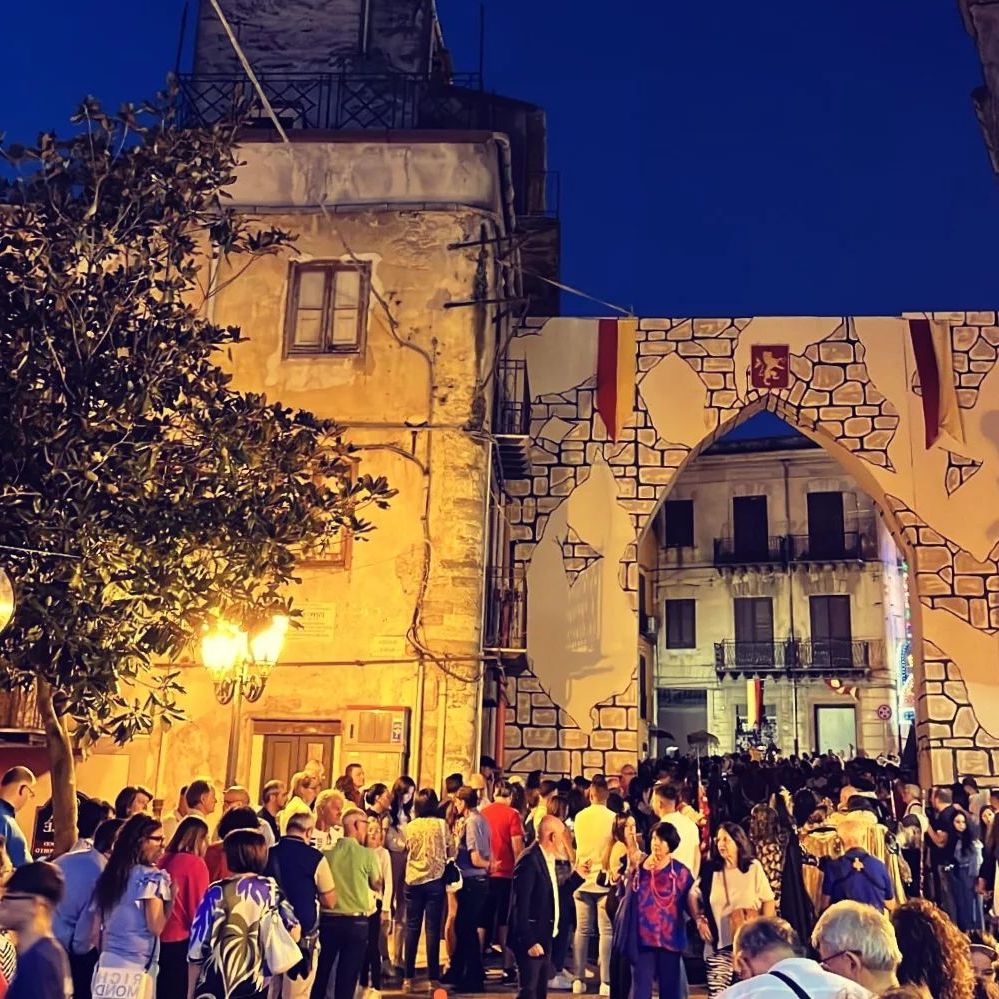Known as the city of churches and waterfalls, the ancient village of Corleone is an unexpected treasure chest of art, culture and traditions that will delight the eyes and souls of visitors.
From the Phoenicians to the Normans, from the Arabs to the Bourbons, every population that has taken turns in the long Sicilian history has modified the urban center of Corleone.
If these places fascinate you, you can visit Corleone with one of our tours in Sicily:
⇒Magna Via Francigena: a piedi da Palermo ad Agrigento
What to see in Corleone
Corleone is one of the most beautiful cities in Sicily.
Why not decide to spend a carefree day to discover the beauties of this fascinating village in Sicily?
If you want to spend a day in Corleone, we have prepared a list of things to see and visit in peace:
- Mother Church
- Church of Santa Rosalia
And now let's set off together to discover the most identifying places in Corleone!

Mother Church
Its original layout dates back to the fourteenth century with subsequent modifications that have taken place over the centuries. Inside there is a precious wooden choir created by the Sicilian artist Giovan Battista Li Volsi. There is also a legend that tells of a treasure, the treasure of San Marco, according to which there is an underground path that connects the crypt of the Mother Church to the Church of San Marco, of which today only ruins remain. Popular knowledge tells of a treasure revealed only to those who managed to cross the entire journey with a full glass of water in hand.
Church of Santa Rosalia
The Church of Santa Rosalia, on the other hand, the Santuzza of Palermo, stands in Piazza Giuseppe Vasi, the central square where San Bernardo's workshop was located.
The construction of the church is linked to two circumstances: the discovery of the relics of S. Rosalia on Monte Pellegrino in 1624 and the plague that threatened Europe and the small village.
The inhabitants then entrusted themselves to the Palermo saint asking for their salvation. So on 16 June 1625 the relics of the Saint arrived in the town where they were welcomed in the ancient monastery of Maddalena and then in the Capuchin church. To build it, the Municipality used the money obtained from the sale of the ancient church of S. Leoluca to the Augustinians. It houses valuable holy water fonts from the sixteenth century.
What to do in Corleone - the Slow Active Tours proposal
Once you have discovered the wonders hidden among the narrow streets of Corleone, the time has come to get to the heart of the sounds and smells of this ancient village.
-
Visit to the Anti-Mafia Documentation Center
A chapter in the history of Corleone is inextricably linked to one of the most bitter of our country's recent past. A testimony contained in the Anti-Mafia Documentation Center which houses the entire documentation of the maxi trial against the mafia. A museum that represents a symbol of the fight against the mafia and the relaunch of a country that has much better to offer.
-
Ficuzza Forest
The beautiful town of Corleone is a stronghold set within a vast natural context, the Bosco della Ficuzza.
The Nature Reserve was born as a hunting estate for King Ferdinand of Bourbon, looking for a home for his family and a place to exercise his passion for hunting. Once the sovereign left Naples following the Napoleonic advance, he had the Royal Casina Borbonica built there, around which the small town of Ficuzza arose, now a hamlet of Corleone. The Reserve covers a vast area that includes the municipalities of Monreale, Godrano, Mezzojuso, Corleone and Marineo and is still today the perfect habitat for foxes, weasels, wild birds, wolves, hedgehogs and birds of prey. The forest is full of waterways generated by rain which form various natural lakes, the so-called "gorghi", once used as ponds for fish farming, but today they play an extraordinarily important role for the ecosystem of the forest . The entire surrounding area is dominated by Rocca Busambra, the highest relief in the Sicani Mountains, in Northern Sicily. Here the surrounding environment gives the impression of being on a Dolomite peak rather than in Sicily, but it is said that on certain days you can hear the sound of the sea waves. A legend probably, but for the older locals it is a gem to be passed down from generation to generation. In fact, it is said that on days when the wind comes from the north, the echo of the waves crashing onto the coast reaches as far as Rocca Busambra. Here the large walls of the massif amplify the noise which is reflected up to the peaks. The result is truly unique in the world. -
Small village of Prizzi
The charming and scenic village of Prizzi has very ancient origins. Located in the mountains of the Sicilian hinterland, it is said to have been founded by exiles who escaped from nearby Hippana, destroyed and sacked by the Romans during the First Punic War. The period of maximum splendor of Prizzi occurred in the late Middle Ages when the feudal lord Matteo Bonello decided to divide the territory into two parts and entrust it to two separate monasteries. The architecture of Prizzi has been affected by the deep connection with the Vatican: today it has up to 17 religious structures built throughout the village such as the sixteenth-century mother church dedicated to San Giorgio and the Church of Sant'Antonio Abate. Of extraordinary importance for the community is the Castle, with the watchtower, built by the Byzantines in 745 to protect the town from Saracen threats. The history of the town is preserved inside the Archaeological Museum of Prizzi where it is possible to visit the numerous finds of ancient Hippana, which provide a broad and exhaustive picture of the origins of the legendary city.
-
Magna Via Francigena: walking from Palermo to Agrigento
Slow Active Tours offers an exciting and intriguing walking journey to discover the hidden beauties of Sicily from north to south, from the Tyrrhenian Sea to the Mediterranean Sea.
Festival and Popular Events of Corleone
The Corleonese Carnival is an event much awaited by the citizens and by the hundreds of tourists who flock to the streets of the small Sicilian village to admire with fervor the traditional parade of allegorical floats that compete to win the trophy of the districts. Particularly awaited are the Riavulicchi , that is, cheerful and witty demonic figures covered in bells and cowbells that go crazy in the squares preceded by the sound of the horn, which over the years have become the symbol of the carnival.
The Siccagno Corleonese Festival is an event dedicated to the typical local product completely produced on site: the Dwarf Siccagno Corleonese Tomato, a special variety that appears more pulpy and has an intense red color when fully ripe. Its name derives from the characteristic cultivation without water. But despite this the nutritional elements in them are highly concentrated, making the product a local specialty.
The Feast of San Leoluca is the event most felt by the Corleonese community because it concerns the celebrations of the Patron Saint San Leoluca. The community meets on March 1st when the simulacrum of the saint is carried in procession through the streets of the town between large bonfires with pruning waste to remember a miracle that occurred when the saint was still a novice. Linked to the March celebrations, the Corleone community dedicates another day of celebrations in the first days of May:
the Cursa di Santu Luca to recall the legend that the city of Corleone was spared from the Bourbon wrath in the revolutionary events of 1860. The statue of the saint is carried to the town gates together with that of Saint Anthony, and then in procession until returning to the starting point where the two saints greet each other with bows.
Typical dishes of Corleone
The typical flavors of Corleone are greatly influenced by the proximity to the Madonie, such as cacio all' Argentiera, an appetizer prepared with fresh cheese. The tasty dish owes its particular name to the woman who invented it: a silversmith who lived in Via dell'Argenteria in Palermo. Tradition has it that the young silversmith prepared this delicious dish to "delude" her neighbors. In fact, her smell was mistaken for rabbit hunter, a much more prized dish.
Eating and drinking in Corleone
Here are some proposals from the area:
Il Moschettiere in Corso dei Mille. Ideal for those who find themselves in the center and want to take a walk after dinner.
The Taverna dei Briganti in Santa Lucia street 13/15. For those who want to dive into the Sicilian culinary tradition of simplicity and delicacy.
Antico forno San Leonardo ai cappuccini in Santa Lucia street. A delicious oven that offers the possibility of consumption inside.
Ideal for a quick snack based on rotisserie and typical local products.
So what are you waiting for? Get your stuff ready and off you go!





